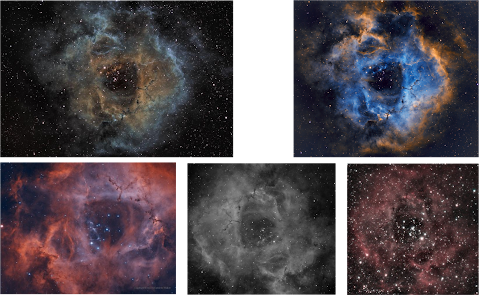“Are visual observers a dying breed?” is a topic on The Sky Searchers discussion board. It does not refer to the book The Last Stargazers by Emely Levesque but to the trend among amateurs to invest in cameras and software for capturing and processing images. The work also requires a special telescope—now very common—generally a larger objective eight to 14 inches (200 to 350 mm) with an equatorial mount with a tracking motor to keep the instrument aligned to the target for hours. Some astrophotography (AP) enthusiasts use traditional 35 mm digital single lens reflex (DSLR) cameras though charge coupled devices (CCD) and single-chip cameras are also common. Then, there is the post-processing. After the computerized (or computer controlled) camera snaps hundreds of long exposures (one to three minutes each), the images are “stacked” in software. Then the images also are manipulated with color filters to create a pleasing depiction of the object. To me, that is art, not science.They decide in advance what they want for the product and they manipulate the data to achieve the effects they desire.
The Journal of Irreproducible Results was a humor magazine for scientists. Launched as a mimeographed samizdat in 1955, it remained popular for over 45 years. “A Drastic Cost Saving Approach to Using Your Neighbor’s Electron Microscope” by Aalbert Heine offered a photomicrograph that was captioned “Fig. 1: A eutectic mixture of quartz and plagioclase … Fig. 2: A cross section through the skin of a peripatus … Fig. 3: The surface of a root hair of a quadruploid species of crabgrass. … Fig. 4: Fragment of a hickory ax handle. …” And, so too, could these pretty pictures be almost any kind of target. Without spectroscopic data—or even right ascension, declination, and local time—the reader, reviewer, or following researcher has no way to gauge the validity of the data. And, more to the point, no objective way to reproduce it. These are irreproducible results.
 |
| Interpretations of the Rosette Nebula (Caldwell 49) |
I do believe that photography is a powerful tool for the science of astronomy. On the same amateur discussion boards, some observers will post a snapshot along with their narrative. The photograph is a valid record. Early in its development spectroscopy came to depend on photography to provide the primary record. Photographic records of spectra have been replaced by digitized data, but analog images of the spectral lines remain important and valuable.
 |
| The stars are pretty at any magnification. |
On that basis, I just signed up for a class in astrophotography. As an observer without AP equipment, I paid the same price as the other client learners who will be bringing their gear to the night of classroom training (virtual), the night of observing at the Austin Astronomical Society dark sky site, and the follow-up class in post-processing. The cost was $250. By comparison, I also paid $130 for a class in astrophysics in order to learn the vocabulary and concepts of astronomy for my volunteer work as an editor with the American Astronomical Society.
PREVIOUSLY ON NECESSARY FACTS
Emily Levesque and The Last Stargazers
Is Physics a Science?
Backyard Astronomy
Turn Left at Orion
Redshift: Six Years with Amateur Astronomy
The Perfect Machine



No comments:
Post a Comment
Note: Only a member of this blog may post a comment.